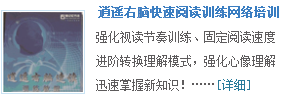m
Lesson16 Breakfast Lunch and Dinner
一、目标
1、知识目标
(1) 能正确的说、认识和口头运用下列单词:good,breakfast, lunch
dinner, morning , afternoon , evening , night
(2)、能力目标
能把所学单词、句子运用到日常生活之中,做到学以致用。
二、重难点
Good, breakfast、 lunch 、dinner
morning afternoon evening night
实际生活中的灵活运用。
三、教具准备
多媒体件、幻灯片、录音机、
四、教学过程
Part1:Greetings!
(师生互相问候)师生问候,使堂气氛温馨,拉近师生距离。
Part II:
1. Please look at the book and guess what the picture are about.
(The teacher say the sentences and do the action to help students understand the Chinese meaning of morning, afternoon, evening .
If necessary, we can explain in Chinese.)
2. Play the audiotape as the students follow in their book.
3. Work in pairs:
Talk about what they do in the morning, afternoon and evening.
Sing a song: I’s time for lunch(活跃堂气氛,使孩子们情绪高涨,主动投入到学习中。)
4 .利用多媒体件,学习第二部分:breakfast, lunch, dinner
①放光盘,并让学生观察图片,理解breakfast, lunch, dinner的含义,
并跟读几遍。
②用P41页第二部分的内容做歌词,教授歌曲。
Part5:Class-Closing
(1)做活动手册——学生自我检测本所学。让学生了解自己在堂上的所得和不足,以便及时的进行自我提高和更正。使孩子们能不断进步。
(2)唱歌结束堂,Sing an English song.整堂在轻松愉快的歌曲中结束.
五、Blackboard:
Lesson16 Breakfast Lunch and Dinner
breakfast lunch dinner
morning afternoon evening night
Lesson17 What’s for breakfast?
教学目标:
一、知识与技能:
认知词汇 egg bread milk
能够运用句子What’s for ____ ? I like ____ for breakfast.进行问答。
二、过程与方法:
创设情景,使学生在语言情境中体会并使用语句。学生小组合作, 给学生更多的交流机会。运用事物或图片,学生更直观的理解认知词汇。
态度与价值观:培养学生大胆自信地运用英语进行交流。提高学生的学习兴趣,调动学生学习的积极性。
三、教学重难点:理解认知本词汇及句子。
学生能了解字母h,w,r,u在单词中的发音极其规则。
四、教具学具:与本教学相关的实物及图片,单词卡片等。
五、教学过程:
1、Greating .
Hello , boys and girls ! Did you eat your breakfast?
2、Review
I like ____. I don’t like ____.
二、New concepts
What’s this ?In the morning ,I eat breakfast. What’s for breakfast?
Look, ask and answer“What’s this?”.
出示实物及图片,演示词汇milk, eggs bread
Listen to the radio ,read these words a few time.
Play “What’s missing?”Porridge or cereal?
(1). 利用手偶演示
板书I like ____ . I like ____ for breakfast.
(2). Ask and answer in pairs.
What’s for breakfast ?I like ___ for breakfast.
(3)小组创编对话 use these sentences:
I like ___ for breakfast. Would you like some ____ ?
Yes, please.\No, thanks.
三、Letters and sounders练习单词的读音部分.
H hungry hand
W worker window
R ruler river
U student compter
四、Class closing
做活动手册——学生自我检测本所学。让学生了解自己在堂上的所得和不足,以便及时的进行自我提高和更正。使孩子们能不断进步。
五、板书:
Lesson 17 What’s for breakfast?
eggs bread milk hungry hand
worker window ruler river
student compter
What’s for breakfast?
I like ____ .I like ____ for breakfast.
Lesson 18: The Magic Stone
一、教材分析:
The Magic Stone这个故事让孩子们初步以为有魔力的石头可以变出很多食物,鼓励孩子们说出更多的食物,复习了整个单元的重点词汇,故事的最后每个人都付出一点就可以做出一锅美味的汤,魔石不能真正的变出食物,真正有魔力的是人们自己。
二、教学目标
1.知识与技能目标
(1)通过对故事的学习,复习巩固本单元的食物词汇;
(2)学生能理解故事内容,并在教师引导下讲述故事、表演故事;
(3)学生能运用句型May I use it? We have 。I have 。
2.情感目标
培养学生乐于助人的品德;培养学生的阅读兴趣。
3.学习策略目标
通过对故事的学习,渗透阅读策略培养,培养学生的阅读兴趣。
三、教具和学具
1.故事材料《The Magic Stone》;
2.多媒体件及图片、实物;
四、教学过程
1、导入 Greeting.
T: Hello boys and girls.
Ss: Hello Miss Wang.
T: Are you ready for English class?
Ss: Yes.
T: Ok, let’s go.
【设计意图】简单的问候拉近与学生之间的距离。
2. Review
T: Boys and girls, I have some food, do you want to know?
Let’s look at these cards. (Show the cards)
T: What’s this?
Ss: Chicken.
T: Good, it’s chicken.
T: What are they?
Ss: Vegetables.
T: Good, vegetables, they are vegetables.
(Teacher uses the same way to review other words)
【设计意图】在复习单词的同时,深化上升到句子,在练习的过程中,深入对单词单数和复数的了解。
T:Boys and girls, let’s play a game, guess what’s missing?
Ss: (Chicken, noodles, dumplings, rice, meat, fish, soup , vegetables,)
T: What’s missing?
Ss: Soup.
【设计意图】在游戏的最后,让学生猜出“汤”这个单词,很自然的过度到下面要讲的内容。
T: Today I want to make some soup, but I have no Vegetables, no chicken,
no fish, I have nothing. I’m sad. But a boy make soup with a stone.
(Show the stone) what’s this? Ok, 石头 Let’s read. Stone, stone.
Ss: Stone, stone.
T: Very good.
【设计意图】通过做汤需要食物,引出一个小男孩做汤需要石头,提前接触石头这个单词,通过操练,让学生熟悉,在进一步引出魔石—本题目
T: This stone is a magic stone. What is the meaning of magic?
Look at the blackboard. Magic, 神奇的,有魔力的。
The magic stone. 魔石.Read after me, the magic stone.
Ss: The magic stone.
T: The magic stone can make soup, do you believe?
S: Yes/ no.
3、let’s come into our story. (Show the first picture and ask)
1)、 Who is in the picture?
Ss: An old woman and an old man. (put the pictures on the blackboard)
2). Are they happy?
Ss: No.
T: Oh, they are sad. The next picture,
3)、Who is coming?
Ss: A little boy.
4). What’s in his hand?
Ss: A stone.
T: Good, the next one. What are they doing?
Ss: They are talking.
【设计意图】通过张贴人物图片,让学生更好的了解故事中所出现的人物,并更容易通过人物对应情节。
T: Do you want to know what happen, and what are they talking? Let’s listen. Open your book at page 44.
T: why is the old woman sad?
S1: Because she is hungry.
S2: They have no food.
T: Yes, they have no food.
T: This picture, what’s the boy saying?
Ss: Magic stone, magic stone, I have a magic stone.
T: What’s magic stone? Magic stone makes soup.
Let’s look at the picture. three people and a stone, what will happen?
What are they doing?
Ss: They are making soup.
T: What do they need when they are making soup, let’s listen.
Ok, first what do they need?
Ss: Vegetables. Fish and noodles,chicken.
And the little boy put the stone into the pot.
T: Look at the last picture. All the people around the soup,what are they doing?
Ss: They are eating and laughing.
设计意图:通过提问,回答,深化主题。在故事中体现的互相帮助的深层含义。
T: Ok the story is over, look at the blackboard if without the stone can you make delicious soup?(Put the hand on the stone)
Ss: yes.
T: Good if they don’t have the food, only have the stone, Can make soup? so do you think the stone is magic?
Ss: No.
T: What is the magic in the story?
S1: …
T: I think everyone is magic. They make the soup together and help each other. (Help each other. write on the blackboard).互相帮助。
T: Do you like the story?
Ss: Yes
T: After the class listen the story again, and tell the story to your father and mother. Can you?
Ss: Yes.
T: Ok class is over, thank you, bye.
Ss: Bye.
【设计意图】通过练习,巩固所学故事。通过向父母以及朋友叙述这个故事,加深学生对所学故事的印象,以及对故事内容的理解。
板书设计
Lesson15: The Magic Stone
Magic stone ready may use
May I use it? We have 。I have 。
Again , please!
教学目标:
一、知识与技能:
能够听、说、读、写本单元词汇breakfast lunch dinner chicken dumplings fish fruit juice meat noodles rice soup vegetables drink eat hungry thirsty morning afternoon evening milk egg bread good
会唱本单元英文歌曲“It’s time for lunch”。
二、过程与方法:
运用游戏,调动学生积极参与。创设情境,创编对话。
三、情感态度与价值观:
小组合作的形式培养学生的团结协作的精神。
提高学生的学习兴趣,树立学生学习的自信心。
教具学具:与本教学相关的实物及图片,单词卡片,录音机等。
教学过程:
一、Greating .
(1)Free talk.
How are you ? How old are you ?
What’s this ? How many ____ ?
What’s for breakfast/lunch/dinner?
(2)Sing an English song you have learned.
唱歌曲It’s time for lunch.\Drink and Eat.
\Are you hungry?\milk and bread.
二、Review
Guessing game “What’s this?”
教师将所学过的表示食物的卡片背面展示给学生,请他们猜测What’s this? (本单元要求掌握的单词:chicken dumplings fish fruit juice meat noodles rice soup vegetables)当学生回答正确后,教师作为奖励将卡片赠送给学生。
2、全班活动
将所学的单词分类,
如:1—三餐(breakfast lunch supper) ,
2—时间(morning afternoon evening),
3—食品(chicken dumplings fish fruit juice meat noodles
rice soup vegetables),
4---状态(hungry thirsty),
5---动作(eat ,drink)各组选择一个,重组新句。
I eat 三餐 in the 时间 .
I like 食品 for _三餐 .
I like食品.I don’t like食品.
I’m _状态 . I want to _动作_.
3.Talk about “My day.”学生自由发言
use the words and sentences we have learn.
如: In the morning ,I eat breakfast. What’s for breakfast?
I like ___ for breakfast.Then I go to school.In the afternoon,
I eat lunch. Now, it’s Lunch-time!
Let’ eat lunch!What’s for lunch? I like ____ .
I don’t like ____ . I like ____ for dinner.What about you?
对学生的表现给与积极的评价与鼓励。
4. 学生能了解字母h,w,r,u在单词中的发音极其规则。
三、Class closing
Let’s sing a song:It’s time for lunch.
四、Homework
Write “My day”on your practice book.
板书: Again , please!
breakfast lunch dinner
chicken dumplings fish fruit meat noodles rice vegetables juice soup
drink eat hungry thirsty
morning afternoon evening milk egg bread good
Lesson 19 : I like Fruit!
一、教学目标
1、知识
(1)听懂会说单词apple , pear, orange , watermelon, eleven, twelve, thirteen, fourteen, fifteen,
(2)听懂会用句子:
How many ____ ? There are_____(数字)
What do you like? I like ____.
2、能力
(1)能够听懂会说本会话,做到学以致用。
(2)通过创设情境,使学生感受并学会运用语言,进一步培养学生的口语表达能力。
3、情感
使同学们了解多吃蔬菜水果的好处,养成多吃水果蔬菜的好习惯。
二、教学重点、难点
1、教学重点:
(1)听懂会说apple , pear, orange , watermelon, eleven, twelve, thirteen, fourteen, fifteen,
(2)听懂会说How many ____ ? There are_____(数字)
What do you like? I like ____.
2、教学难点
听懂会说apple , pear, orange , watermelon, eleven, twelve, thirteen, fourteen, fifteen,
How many ____ ? There are_____(数字)
What do you like? I like ____.及相关句型。
三、教具、学具
1、教具
有关本水果的挂图及幻灯片、音机。
2、学具
(1)学生准备apple , pear, orange , watermelon图片。
(2)水果实物。
四、教学过程
1、复习以前学过的有关食物的单词。
Bread chicken cookies dumplings eggs fruit juice meat noodles rice soup drink eat
(采用拼读方法)教师出示图片让同学进行拼读练习。
2、新授
(1)出示挂图或幻灯片,apple , pear, orange , watermelon, eleven, twelve, thirteen, fourteen, fifteen,
T: Look, so many nice fruit. Do you want to eat?
Ss: Yes.
T: OK, Let’s have a fruit party.
Ss: Great.
(2)教师指着图上的水果或实物与同学对话。
T: Would you like to eat apple?
S1: Yes, please.
T: apple……(教师领读几遍)
Ss: apple……
T: Would you like to eat pear?
S2: Yes, please.
T: pear……
Ss: pear……
(3)同学二人之间对话练习
S1:Would you like to eat watermelon?
S2: Yes, please.
S1: Here you are.
S2:Thank you.
S1: You’re welcome.
(4)教师边读单词边在黑板上进行板书:
apple , pear, orange , watermelon,
(5)游戏:听音乐传水果。学生坐成环状,教师分别将两个水果交给两头的两名学生,音乐响起后,两头同时向里传水果,音乐停止后,拿水果的两名学生走到前面进行会话表演。
(6)水果传到教师手中,教师和学生进行会话表演。
(7)介绍句型How many ____ ? There are_____(数字)
教师手指书中挂图提问。
T: What’s this?
S1: watermelon.
T: Yes, It’s a watermelon.
T: How many watermelons?
S1: eleven.
T: There are eleven watermelons.
(8)播放文录音,让学生看书跟读。
(9)Class closing
Let’s sing a song: Delicious Food
五、板书设计
Lesson 19 : I like Fruit!
apple , pear, orange , watermelon, eleven, twelve, thirteen, fourteen, fifteen,
How many ____ ? There are_____(数字)
What do you like? I like ____.
Lesson20:Hamburgers and Hot Dogs
一、教学目标
1、知识
(1)听懂会说单词 hamburger, hot dog, donut, ice cream,may,welcome,
(2)听懂会用句子What would you like?
I’d like ________.May I have one?
Sure. Thanks。
You’re welcome.
2、能力
(1)能够听懂会说本会话,做到学以致用。
(2)通过创设情境使学生感受并学会运用语言,进一步培养学生的口语表达能力。
3、情感
了解中西餐的相同和不同之处,进一步了解西方人的饮食文化,为进一步学好外语打下坚实的基础。
二、教学重点难点
(1)听懂会说hamburger, hot dog, donut,
ice cream ,may, welcome,
(2)听懂会说有关What would you like?
I’d like _______. May I have one?
Sure. Thanks。
You’re welcome.
三、教具学具
1、教具
(1)有关本的教学挂图或幻灯片。
(2)hot dog, donut, ice cream, hamburger实物。
(3)录音机。
2、学具
画一些实物卡片。
四、教学过程
1、复习bread chicken cookies fruit juice meat milk sandwich soup
教师出示挂图与学生问答练习。
T: Would you like to eat fruit? S2: Yes, I would like.
T: Would you like hamburger? S3: No, I would not.
2、新授
(1)出示实物或挂图
T: What’s this?(指hamburger)
Ss: Hamburger.(学生可能读音不准,教师适当纠正。)
T: Yes, it’s a hamburger.
T: What’s that?(指hot dog)
Ss: hot dog .教师给予纠正发音)
T: What’s this?(指donut)
Ss: donut.(纠正读音)
T: What’s that? (指ice cream)
Ss: ice cream.(这个词学生读起可能容易些)
(2)围绕四个单词(hamburger, hot dog, donut,
ice cream)师生进行对话练习。
教师站在讲台桌前利用食物或包装盒与自告奋勇的学生进行表演。
教师扮演售货员,学生扮演顾客。
T: What would you like Hamburger or hot dog?
S1: Hamburger, please.\ Oh, my fvourite. \ May I have one?
T: Sure.
S1:Thanks.
T: you’re welcome.
然后师生互换角色。
S1: What would you like donut?
T: donut, please. I’d like donut.
(3)游戏(猜单词,用手语表示)
Hamburger hot dog, donut, ice cream,
看一看哪个同学反应最快,回答最准确。
五、板书设计:
Lesson20: Hamburgers and Hot Dogs
hamburger, hot dog, donut,
ice cream, may, welcome,
What would you like?
I’d like _______.
Oh, my fvourite.
May I have one?
Sure.
Thanks.
you’re welcome.
Lesson21: In the Restaurant
一、教学目标
1、知识
(1)听懂会说单词 数字16—20。
(2)听懂会用句子:What would you like ? Would you like some tea?
I would like some ____.
2、能力
(1)能够听懂会说本会话,做到学以致用。
(2)通过创设情境使学生感受并学会运用语言,进一步培养学生的口语表达能力。
3、情感: 养成在家帮助父母做家务,饭后洗餐具的好习惯。
二、教学重点难点
(1)听懂会说单词16--20
(2)听懂会用句子:What would you like ?
Would you like some tea?
I would like some ____.有关的句型。
三、教具、学具
1、教具
有关本餐具的挂图或实物,录音机。
2、学具:学生准备(五人一组)一个餐具。
四、教学过程
1、复习数字1—20让全班每个学生数1—20,然后让他们一个接一个站起,按正确顺序每人说出一个数字。
2、新授
(1)出示实物或挂图
T: Look, what are these?
Ss:tables.
T: Yes, They are tables.
T: How many tables are there?
Ss: Sixteen tables.
T: Yes, sixteen tables.领读几遍
T: What are those? (指chairs)
S1:Chairs.
T: Yes, chairs. How many chairs are there?
S1:Seventeen chairs.
T: Yes, there are seventeen chairs.领读几遍。
T: What are these?(指hot dogs)
S2: Hot dogs.
T: Yes, hot dogs. How many hot dogs are there?
S2: Eighteen.
T: Yes, there are eighteen hot dogs.领读几遍。
T: What are those?(指hamburgers)
S3: Hamburgers.
T: Yes, spoons. How many hamburgers are there?
S3: Nineteen.
T: Yes, there are nineteen hamburgers.(领读几遍)
T: What are these?(指donuts)
S4: Donuts.
T: Twenty.
T: Yes, twenty donuts. There are twenty donuts.
(2)同学二人之间对话练习。
S1: How many tables are there?
S2: There are sixteen tables.
S3: How many chairs are there?
S4: There are seventeen chairs.
S5: How many hot dogs are there?
S6: There are eighteen hot dogs.
S7: How many hamburgers are there?]
S8: There are nineteen hamburgers.
S9: How many donuts are there?
S10: There are twenty donuts.
(3)教师边读单词边在黑板上进行板书
(4)教师扮演饭店服务员与学生对话:
T: What would you like?
S1: I would like somr noodles.
S2: I would like some chicken and rice, please.
S1: What would you like?
S4: I would like a bowl of rice, please.
S5: Would you like some tea?
S6: No, thanks.I’d like some water.
(5)听录音学生看书跟读。
五、板书设计
Lesson21: In the Restaurant
Sixteen tables seventeen chairs
Eighteen hot dogs nineteen hamburgers
Twenty donuts
What would you like?
Would you like some tea?
I would like ________.
Lesson 22 : How much is it?
一、教学目标
1、知识
听懂会说并会灵活运用 How much is it?
How much for one ____? _______ yuan.
I’ll take _______, please. Thank you.
2、能力
(1)能够听懂会说本会话,做到学以致用。
(2)通过创设情境,使学生感受并学会运用语言,进一步培养学生的口语表达能力。
3、情感
懂得在购买商品时应该使用的文明礼貌用语,做到讲文明懂礼貌。
二、教学重点、难点
听懂会说How much is it?
How much for one ____? _______yuan.
I’ll take _______, please. Thank you.及正确使用。
三、教具、学具
1、教具
(1)有关文里出现的hot dog donut 实物,托盘。
(2)有关文的件。
(3)录音机。
(4)挂图
2、学具
服装(售货员用的帽子、围裙)
四、教学过程
1、复习以前学过的句型及单词。
教师用托盘端着donut hot dog走到同学面前
T: Would you like Hot dog or donut?
S1: Hot dog, please.
T: Oh, here you are.(递给)
S2: Thanks.
T: You’re welcome.
2、新授
(1)让学生头戴售货员帽子,腰围着围裙与教师展开对话:
教师走到同学面前问:
T: How much for one donut?
Ss: One yuan.
T: Oh, one yuan.(琢磨一下) I’ll take twelve, please.
(掏钱并递给同学,接过托盘)Thanks, I’d like two donuts.
教师板书:
How much for one _______?
I’ll take ______, please.
教师领读几遍。
(2)同学二人用How much for one _______?
I’ll take ______, please.展开对话。
S1: How much for one hot dog?
S2: Five yuan.
S1: I’ll take five, please.
S2: How much is it?
S1:Tow yuan.
S2: I’ll take six, please.
(3)听录音,同学看书跟读。
(4) Let’s sing . Do you know the donut man?
(5) Class Closing
Say“Goodbye!”to the students.
五、板书设计
Lesson 22: How much is it?
How much is it?
How much for one _______?
I’ll take ______, please.
Lesson 23: How Much Are They?
一、教学目标:
1 认识词汇any
2学习新句型How much is/are the ___?能运用新句型。
3 培养学生爱学英语,热爱生活的感情。
二、教学重点、难点:学生能了解字母c,y 在单词中的发音极其规则。
句型How much is/are the ___?
三、教具准备:
一些食物,录音机。
四、教学过程:
Class opening and review
Greeting
Sing: Do you know the donut man? (边唱边复习食物词汇)
Practice in pairs
How much for one ____? _____ yuan.
I’ll take _____, please.
New concepts
How much is the ____?
How much are the ____?
Demonstrate
教师示范拿起一件东西,先用How much for one ___?
提问价格,然后再用新句型How much is the ____? 提问价格。使同学们明白这两句话的意思相同。
Drill
板书新句型并操练。
Demonstrate
继续演示买东西,教师指着一对东西说:
How much are the ____?
使同学们理解要问多的东西的价格应使用这一句型,板书新句型并领读.
Compare
让同学们比较这四个句型,然后再说一说。
T: How much are the ___? How much for one ___?
How much is the ____? How much is it?
P: ____yuan.
T: Hmmm. No, thanks.
P: Yes.
T: Oh, I’ll take ___, please.
2.letters and sounds.
C rice juice
Cold cow
Y yellow yo-yo
cry fly
3、Class closing
Say“Goodbye!”to the students.
五、板书:
Lesson 23: How Much Are They?
How much for one ____? ____ yuan.
How much is the ____? I’ll take ___, please.
How much are the ____? How much is it?
Lesson 24: A little monkey
教材分析 :本属于阅读,学生可以通过本的练习培养自己的综合能力。使学生更深的感受英语氛围。
设计理念: 在本讲授过程中,主要通过看光盘实现,大大加强视频效果。以至于降低难度从而提高学生学习英语的兴趣。
一、 教学目标
(一)知识目标
1、 认读单词:pick fruit peach hurt watermelon
2、 掌握句型:me to.
Would you like some fruit?
I hurt my leg..
Time for supper.
(二)、能力目标
能会用本单词和句型,并将其运用到实际生活中。
(三)、情感目标
大胆交流,培养自信的交际能力。
二、教学用具
教学卡片 光盘
三、教学过程
(一)、师生互相问候。
(二)、新授单词pick fruit peach hurt watermelon
1、教师做出“摘”的动作,说出“pick”学生和老师一起做。
2、同样的方法讲授“hurt”
3、教师出示“peach”“watermelon”的图片,然后读出单词。
4、教师总结:“They are fruit.”由此引出“fruit”领读这四个单词。
(三)、播放本光盘。
1、播放第一遍光盘,学生大概了解本故事的内容。
Picture 1
T :what do you see in the picture?
Who is hungy? What do they want to eat?
Picture 2
T:what would the monkey on the left say?
Picture 3
T:Are the monkeys happy? Why ?
Picture 4 5
T:what do you see in the picture?
What will the monkey pick?
Picture 6
T: What is the matter?
Does the monkey have any fruit now?
What will the monkey do?
Picture 7 8 9
T: what does the monkey find?
What does the monkey do?
Picture 10
T: does the monkey have any fruit? Why?
Picture 11
T:Are the monkeys happy ? what will the monkey say?
(英语故事对于三年级的学生有一定难度,所以先让学生看一遍光盘,让学生感觉像是在观看动画片而不是在学英语。)
2、播放第二遍光盘,在播放的同时,让学生跟读简单的句子:I am hungry.
Would you like some fruit? Yes ,please! Thank you ! let`s play! Where is fruit?
3、播放第三遍光盘,教师对复杂的句子: I`ll get some fruit for you. I`ll pick some.
I hurt my leg. Time for supper.进行讲解并领读。
4、播放第四遍光盘,对本内容进行整体熟悉。(再放第四遍光盘时,学生对
本内容已经比较熟悉,也就可以跟着光盘朗读了。)
(四)拓展练习
1、教师把本光盘再放一遍,这次播放的时候只在屏幕上出现图片而不出现
文字。学生跟着老师一起复述本故事内容。
2、一些表现好的学生可以单独复述,教师对他们进行鼓励。
3、组织学生分角色朗读,一个学生扮演monkey,一个学生扮演rabbit,其他
学生扮演monkeys.
四、结束教学:
1、问学生“what have you learnt in the class?”引导学生做小结
2、The students sing a song "Good-bye."
五、板书设计:
Lesson 24: A little monkey
pick fruit peach hurt watermelon
me to.
Would you like some fruit?
I hurt my leg..
Time for supper.
Again, Please!
一、教学目标:
复习本单元重点词汇和句型。
知道并能运用本单元所学知识。
培养学生及时总结复习的良好学习习惯。
二、教学重点、难点:
复习本单元重点词汇和句型。
学生能了解字母c,y 在单词中的发音极其规则。
三、教具准备:
单词卡片,录音机。
四、教学过程:
Class opening and review
问候。
2.唱: Delicious food. \What would you like ?
Do you know the donut man?
3. 游戏:What’s missing. (复习本单元词汇)
4.复习本单元句型。用角色扮演形式。
How much is it? How much for one ____?
How much is/are the ___? ____ yuan.
I’ll take ____, please.
Thanks. You’re welcome.
What would you like? I’d like ___ and ___.
Test
学生独立完成测试。
Class closing
唱一首他们喜欢的歌曲。
五、板书:
Again, Please!
apple , pear, orange , watermelon, eleven, twelve, thirteen, fourteen, fifteen,
hamburger, hot dog, donut, ice cream, may, welcome,sixteen tables seventeen chairs eighteen nineteen Twenty
How How many ____ ? There are_____(数字)
much is it? How much for one ____?
How much is/are the ___? ____ yuan.
I’ll take ____, please.
Thanks. You’re welcome.
What would you like? I’d like ___ and ___.
m
本文来自:逍遥右脑记忆 http://www.jiyifa.com/xiaoxue/137000.html
相关阅读:2014年三年级英语下册教案(新冀教版)



